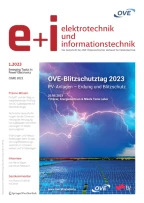Avoid common mistakes on your manuscript.
Daniel Watzenig
Wolfgang Bösch
Automated driving is seen as one of the key technologies that considerably will shape our society and will influence future transportation modes and quality of life, altering the face of mobility as we experience it by today. Many benefits are expected ranging from reduced accidents, optimized traffic, improved comfort, social inclusion, lower emissions, and better road utilization due to efficient integration of private andpublic transport. It is envisioned that automated driving technology will lead to a paradigm shift in transportation systems in terms of user experience, mode choices, and business models.
Over the last couple of years, significant progress has been made in vehicle automation. Given the current momentum and progress, automated driving can be expected continuously to progress and a variety of products will become commercially available within a decade. Not only technological advancements have been demonstrated in many venues, several states and federal government in Europe, the US, and in Asia have moved forward to set up regulations and guidelines preparing for the introduction of self-driving cars.
However, despite tremendous improvements in sensor technology, high performance computing, machine learning, computer vision, data fusion techniques, control system design, communication bandwidth (in-vehicle Ethernet, V2X…), and other system technology areas, market introduction of a fully automated vehicle that is capable of unsupervised driving in an unstructured environment still remains a long-term goal. Even for well-structured environments, further research is required exploiting the full potential of road transport automation. In order to be accepted by drivers and other stakeholders, automated vehicles must be reliable and significantly safer than today’s driving baseline. The ultimate safety test for automated vehicles will have to point out how well they can replicate the crash-free performance of human drivers especially at the level of partial and conditional automation within mixed traffic.
Beyond the technological issues, several regulatory action items for faster introduction of automated vehicles still have to be resolved by the governments in order to ensure full compatibility with the public expectations regarding legal responsibility, safety, and privacy. Authorities have to create the legal framework to remove liability traps, to encourage test regions, to promote long-term infrastructure investments, to provide open access, and to setup legal frameworks for inter-car communication.
The variety and the exciting challenges that still need to be resolved to advance automated driving closer to reality have motivated the creation of this special issue of e&i.
All articles of this special issue have been carefully selected to cover certain aspects of the three building blocks of automated driving—Sense, Think, and Act—from both the academic and the industrial perspective. All subsequent presented articles review the current state-of-practice and state-of-the-art in their respective field. The contributions envision the future trends, along with the specific challenges in the development and testing of embedded systems and sensors (i.e. radar and camera), the concepts for improved availability and computational power as well as quality assurance and reproducible test setups for automated driving.
The special issue also contains two invited contributions: Holger Meinel, an internationally renowned radar expert with more than 40 years of experience in industry (Daimler AG) discusses the history, present and the future of automotive radars. Thomas Zach, CEO of Austria’s first test field for self-driving cars, introduces the vision, mission, and approach of ALP.Lab that has been founded in September 2017.
The present special issue of e&i on automated driving provides an overview of current and emerging technological challenges in selected fields and gives insights into industrial requirements. We hope that the reader will be inspired by the different technical papers and selected articles.
Finally, we would like to express our sincere appreciation and gratitude to all authors, co-authors and reviewers, who made the publication of this special issue possible as well as to Jutta Ritsch (Managing Editor e&i) for her professionalism and support during the preparation of this special issue.
Author information
Authors and Affiliations
Corresponding author
Rights and permissions
About this article
Cite this article
Watzenig, D., Bösch, W. Automated driving. Elektrotech. Inftech. 135, 303 (2018). https://doi.org/10.1007/s00502-018-0634-3
Published:
Issue Date:
DOI: https://doi.org/10.1007/s00502-018-0634-3
